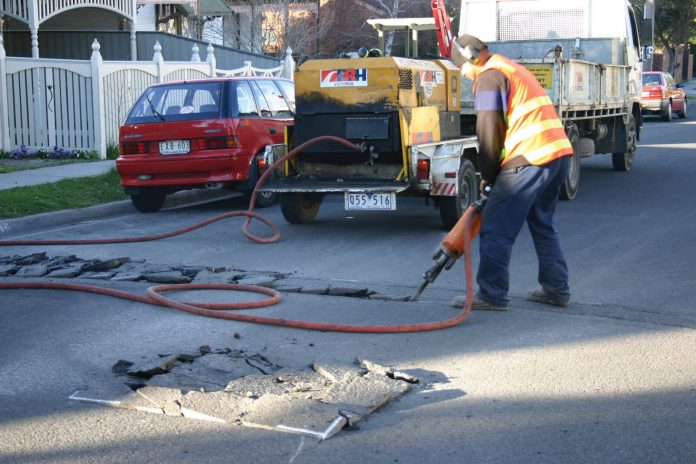This article is written by Devina Poonia, from Ansal University, Gurugram. This article deals with the history and the importance of Public Interest Litigation and its vital role in the judiciary regulating the reforms of noise pollution.
Table of Contents
Introduction
The concept of Public Interest Litigation (PIL) was first introduced by Justice P.N Bhagwati in the historic case of Hussainara Khatoon in the year 1979 where the right of 40,000 prisoners was brought forward in the Supreme Court of India for free legal aid and fast hearing. Before the 1980s the cases were heard directly or indirectly by the courts under original and appellate jurisdiction, the introduction of PIL ensured that the marginal sections of society were given an opportunity of being heard. The advocates represented and filed various petitions in the court that protected the constitutional and legal rights of the poor and secured the provisions of the Constitution and other laws.
Noise Pollution
Noise pollution is defined as any sound that is unwanted and can be heard from various outdoor sources like railways, construction sites, rock concerts, honking of cars. Sound waves typically carry in the air from the source to the ear, a normal sound wave measurement is considered to between 70 dB (hearing threshold) to 85 dB. The decibel levels of noise above 85 is considered to be loud.
Noise Pollution Rules 2000
The rules came in effect dated February 14, 2000, under the Environment Protection Act, 1986 which brings in the measure of sound control to lessen the effect of noise pollution in public places. Rule 7 of the Regulation imposes punishment on the people, if the sound level exceeds the ambient noise level standard of 10 dB in any particular area or zone during the night time following which a complaint can be filed to the authorities in charge. Above 100-120 dB the noise is considered uncomfortable.
Causes of noise pollution
Noise pollution is the invisible danger and fails to attract the attention of people in most cases, there are mostly two causes of noise pollution: natural and man-made, where man-made causes have proven to be the most dangerous effect on human health. Many people create a public nuisance by disturbing the peace of neighbourhoods by blasting sounds and the use of beat drums. It is a major global pollutant in the urban areas which also widely affects the ecosystem. Some man-made causes of noise pollution are:
- Construction activities
- Social events
- Industries using huge sound-emitting machines
- Bursting of crackers
- Domestic appliances
Effects of noise pollution
Noise pollution can do a lot of damage to the physical and mental capacity of a human. It causes stress, annoyance, physiological orders, and loss of concentration. Many studies have shown that noise pollution can have serious impacts on animals also.
Rule 6: consequences of violation in area/zone
Under rule 6, there are various offence enumerated by the act which brings in forth the action that can be taken by the provisions of this act on the violation of the said rules in any area or zone that are:
- Whoever, plays any music or uses sound amplifiers,
- Whoever, beats a drum or tom-tom or blows a horn either musical or pressure, or trumpets or beats or sounds any instrument, or
- Whoever exhibits any mimetic, musical or other performances of a nature to attract crowds.
- Whoever, bursts sound-emitting crackers; or
- Whoever uses a loudspeaker or a public address system.
It was held in a study that if the noise levels increase the decibel of 90 hertz then there would be a prolonged effect on the future generations to come and in the near future, the people who will be born would be deaf and dumb. To regulate this effect the government came with the act and imposed fines and penalties on the violators to ensure that the public tranquillity and peace is not disturbed.

Permissible level of sound in Industries
Any sound level too loud in an industrial production area can be considered as a barrier for the workforce to give a reasonable level of output and causes irritation and an unsafe work environment for the labour. In today’s world, it is impossible for the engineering system to work without a generator so to ensure the sound safety levels the sound wave transmission can be quieter so that it does not propagate to the human ear. To ensure the safety of the workers they are equipped with safety equipment like earplugs, helmets to lessen the effect of noise.
The Central Pollution Control Board of India has set the permissible level of sound in areas and zones and has bifurcated in categories that are:
- Industries: 75 dB (daytime) and 70 dB (night time)
- Commercial: 65 dB (daytime) and 55 dB (night time)
- Residential: 55 dB (daytime) and 45 dB (night time)
- Silent zones: 50 dB (daytime) and 40 dB (night time)
The silent zones include areas that lie within the vicinity of 100 meters like schools, colleges, hospitals, and courts. Moreover, it has also set the guidelines on the use of sound level in generators divided into three categories namely:
- Silent or soundproof generators used in silent zones with the technology of soundproof gensets.
- Generators with a noise level of less than 75 dB are used in commercial areas where the requirement of power output is high.
- Generators with a noise level of less than 120 dB are used by manufacturers in the industrial areas where the generation of power output is very high in the production plants.
Noise pollution is dealt under the Indian Penal code, sections 268, 290, and 291 which deals with the offence of public and common nuisance where punishment is awarded to the violator under section 290, and 291 for public nuisance. Under section 133 of the Criminal Procedure Code, the magistrate has the power to order the violator of public nuisance to remove such nuisance under the provisions of law.
Famous cases of PIL with regards to noise pollution
India v. KKR Welfare Colony Association
In the case of the Church of God (gospel) located at KKR Nagar, Madhavram road Chennai used amplifiers, loudspeakers, drum set and guitar to recite prayers in the morning, disturbed by the loud noises in the community affecting day to day activities of the people, KKR welfare filed a complaint to the local police of Tamilnadu against the church. In response to the petition filed by the respondent which held a survey that the noises of vehicular traffic on Madhavram road caused the noise pollution.
It was decided by the court that no religion can take the liberty to practice and propagate their religion by reciting prayers through the use of loudspeakers, amplifiers by disturbing the peace of others. It is to be noted that the use of such instruments can cause hearing impairment, annoyance, and sleep disturbance. The public cannot violate the guidelines restricting the use of sound amplifiers in industrial, commercial, silent, and residential zones framed under the Noise Pollution Regulations in India.
Sushil Chandra Srivastava & Anr. v. State of UP
In the case of the Allahabad High Court gave the guidelines to put a stop on illegal use of loudspeakers in the state by DJs. The respondent used L.C.Ds equipped amplifiers blasted loud noise from 4 am till midnight which created a nuisance in the residential area. Petitioner 1 who was 85 years old lady suffering from multiple diseases complained that she suffered ear damage and heart problems. The 3 hospitals near the residential area of Hashimpur road, Pryagraj admitted patients having heart diseases. The court pronounced certain guidelines in this that are:
- The district management shall notify the local newspapers of the said rules with the name of the authority and his contact number.
- A toll-free number would be provided to the residents to complain of any nuisance regarding noise pollution and contact police after which immediate action will be taken and police will come to inspect the level of noise and take action against the offender under Rule 7.
- No permission would be granted to DJ even if the sound is within the permissible limits as it is against the said rules.
- Under rule 2 (e) and (f) the administration must recognize the prone areas and designate the noise standards.
- The District management shall constitute a team to visit the prone areas regularly specifically before the commencement of any festival and notify the organizers about said rules.
- Whoever violates the rules would be penalized under Section 15 of the Environment Protection Act 1986, with imprisonment of five years and a fine up to rupees 1,00,000/-
Santosh Pachalag v. State of Maharashtra
In the case of, the petitioner challenged the illegal use of loudspeakers in Mosques for reciting Azaan being mandatory to namaz. It was held in a survey that around 45 of 49 mosques do not have the permission to use the loudspeakers. It was concluded that the use of such amplifiers disturbed the sleeping pattern of the people residing near the mosques. It was held by the Bombay High court to prohibit such religious institutions from using the loudspeakers and not to use the same without the requisite permit between 10 am to 6 pm.
Suggestions
Humans are comfortable at hearing sounds not more than 85 decibels there must be total restriction of loudspeakers in the silent zone, there must be an identification of the source areas which emit loud noises and a standard rules and guidelines must be formulated to regulate and restrict the noise level.
Industries should invest in noise-cancelling headphones for the workers, strict protocols to be followed by the industrial zones to regulate the effective working of the labour force by educating them on the use of earplugs and safety while using machines that emit sounds more than 100 decibels. There must be absolute provision to put a stop on honking unless it is required to be aware of the car which has become a barrier and stops the flow of traffic or to alert a person to clear the path.
Be creative in soundproofing the layout of the house or to soundproof those areas in the house which are used more than the other parts of the house, create and spread awareness among the people to use techniques which helps in noise-cancelling or move to residential areas which are less prone to the high-frequency sound. There must be constant noise pollution checks near schools and hospitals as they are silent zone areas.
Conclusion
Public Interest Litigation has played a vital role in safeguarding and protecting the rights of people. The courts can take suo moto action (on their own) if they find any particular case not able to seek justice through the formal procedures of the court, the lawyers are appointed to look into the matter or case and they are also assigned the role to check whether the orders passed by the court are implemented or not. The court must consider the fact that petitions are not filed by individuals who want to gain profits out of it or to gain political advantage and disrupt the administrative process. Filing of frivolous petitions in the court can involve the imposition of a fine, PIL must be filed in the interest of the public and not for an individual.
References
- https://www.britannica.com/science/noise-pollution
- http://cpcbenvis.nic.in/noisepollution/noise_rules_2000.pdf
- https://www.slideshare.net/advocatekgupta/noise-pollution-rules-2000
- https://economictimes.indiatimes.com/small-biz/productline/power-generation/generator-noise-level-regulations-permissible-limits-and-different-types-of-gensets/articleshow/69094804.cms
- http://www.seedforsafety.com/vds_3_template_2396/datafile/Indian%20Rules/FACTORIES%20ACT%20NOISE%20REGULATIONS%201997.pdf
- http://cpcbenvis.nic.in/scanned%20reports/PCL%206%20Noise%20Pollution%20Regulations%20in%20India.pdf
- https://indiankanoon.org/doc/88766/
- https://www.livelaw.in/environment/noise-pollution-allahabad-hc-bans-djs-passes-directions-regulating-loudspeakers-147362
- https://www.firstpost.com/india/silence-please-remove-illegal-loudspeakers-used-in-mosques-festivals-says-bombay-high-court-2438882.html
- https://www.conserve-energy-future.com/easy-and-practical-ways-to-reduce-noise-pollution.php
- https://www.britannica.com/science/noise-pollution
- http://cpcbenvis.nic.in/noisepollution/noise_rules_2000.pdf
- https://www.slideshare.net/advocatekgupta/noise-pollution-rules-2000
- https://economictimes.indiatimes.com/small-biz/productline/power-generation/generator-noise-level-regulations-permissible-limits-and-different-types-of-gensets/articleshow/69094804.cms
- http://www.seedforsafety.com/vds_3_template_2396/datafile/Indian%20Rules/FACTORIES%20ACT%20NOISE%20REGULATIONS%201997.pdf
- https://indiankanoon.org/doc/88766/
- https://www.livelaw.in/environment/noise-pollution-allahabad-hc-bans-djs-passes-directions-regulating-loudspeakers-147362
LawSikho has created a telegram group for exchanging legal knowledge, referrals and various opportunities. You can click on this link and join:












